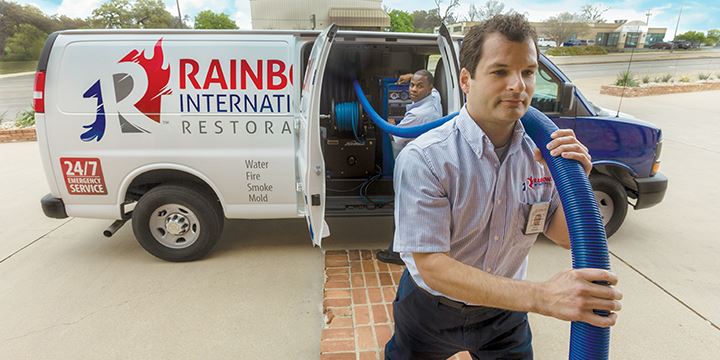
Hello and welcome back to the blog here at Rainbow Restoration International of Buffalo! Here on the blog, we like to share some tips on keeping your home and/or business safe and preventing disasters. We also like to share reasons why you should hire a licensed and insured professional for the job rather than attempting to do large jobs on your own and general cleanup.
Today, we’re going to go with that last item on the list and share some general fire cleanup tips after a blaze in Buffalo, NY.
Fire Damage Cleanup – These Need to be Thrown Out
Electrical Equipment
Small appliances, entertainment systems, and other electrical devices can start a new blaze if they’re used after a fire. The exposed wiring and the potential for water and smoke damage to the device can cause more damage to your home. Some can be saved, like personal electronics such as tablets, cellphones, external hard drives, and personal computers and laptops. If you’re unsure about any of your devices, it’s better to dispose of them.
Burned Clothes
While it is technically possible to clean your clothes, it’s not always advisable. Soot and smoke have chemicals that irritate the skin on contact and your respiratory system when inhaled. There could also be odors and chemicals on them from when the firefighters put out the blaze. It’s generally better to throw out your damaged clothes.
Textiles
Aside from clothing, other large fabrics like bedding, drapes, and rugs should be thrown out after a fire. They’ll absorb and contain the same smells and chemicals that your clothes would, and on a much larger scale. They can be too large to effectively clean and restore, it’s advisable to simply get rid of them.
Furniture and Mattresses
Similar to textiles and clothes, the soft surfaces on mattresses and furniture like sofas can trap the smells and chemicals from fires and firefighting. Aside from the cosmetic and smell factor, heat from the fire and water damage probably caused structural damage to your furniture that makes it unsafe.
Cosmetics and Toiletries
Makeup and other cosmetics are made up of chemicals and minerals that are altered by the heat from fires. Water and fire extinguishers that are used to put out the blaze also alter the composition of makeup and toiletries. These products are always better thrown out, even if they don’t appear to be damaged.
Medicine
In a similar vein to cosmetics, medicine’s potency and effects can be affected and altered by heat, soot, smoke, water, and chemicals found in firefighting tools. Toss everything out and talk to your doctor about new prescriptions or head to your local pharmacy for over-the-counter stuff.
Food
This shouldn’t be too much of a shock for people: all your food items should be tossed out after a fire, even the non-perishables. Sealed or canned items might look alright, but the heat from a fire can activate and promote bacteria growth. And obviously, the chemicals used to fight fires contaminate food. Food in a sealed, plugged-in refrigerator or freezer can be ok for a few hours, but it’s generally safer to head to the store for more food.
Contact Us!
Fully cleaning and disinfecting fire damage so that it’s safe for human use and habitation is a large job. These kinds of jobs are best handled by a team of fully-licensed professionals. We’re a fully IICRC Certified Restoration and Mitigation team for water damage, fire and smoke damage, mold remediation, and commercial and residential carpet cleaning. We haven’t met a fire damage problem we haven’t conquered!
Make sure to stay up to date with our blog for mold, water, and fire and smoke damage prevention tips and advice on cleaning up small messes and the like. You can follow along on our Facebook and check out our reviews on Yelp! Stay safe in your home or business! Get in touch with us by filling out our convenient online contact form, or if you need immediate assistance, call us at 716-874-4919. Let’s make the cleanup as quick and effective as possible.









Recent Comments